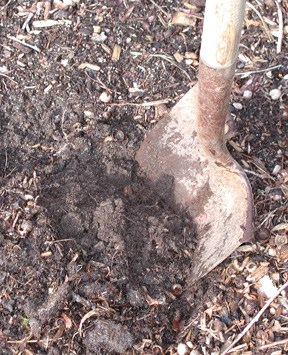 Last summer I treated myself to brunch at the local breakfast-and-lunch spot. Knowing the owner to be a gardener, I inquired about his tomatoes as I was being seated. “I’m so glad you asked!” he said, and rushed back to the kitchen. I assumed that he had gone to take care of business, but he returned moments later with a stack of photographs. “Just look at my tomatoes,” he crowed. “They’re almost two stories high!”
Last summer I treated myself to brunch at the local breakfast-and-lunch spot. Knowing the owner to be a gardener, I inquired about his tomatoes as I was being seated. “I’m so glad you asked!” he said, and rushed back to the kitchen. I assumed that he had gone to take care of business, but he returned moments later with a stack of photographs. “Just look at my tomatoes,” he crowed. “They’re almost two stories high!”
As I shuffled through the pictures I saw that the tomato plants were indeed about eight feet tall. And, more importantly, they were weighted with fruit. “Very impressive.” I said, “Are they always this big?” Joe shook his head, and leaned into my booth. “This year,” he confided, “I took care of the soil.”
Improving the soil where tomatoes are planted is crucial for a good crop. Tomatoes need loose, rich soil so they can spread their roots quickly. Mixing organic matter into the garden is the key. Joe told me that he used his own compost and bagged manure. He also had a pH test done, and found that he needed to add lime. Tomatoes grow best in a neutral to slightly acid soil; they absorb nutrients best when the pH is 6.5 to 7.0, and keeping the soil in the lower part of that range will help prevent the condition known as “yellow shoulder.”
To prepare your garden for tomatoes, dig compost or manure deeply into your beds. Use aged or composted manure when amending soil in the springtime. Do this in an area about three feet in diameter and two feet deep, remembering that roots will grow out and down. At the same time you can mix in a slow release organic fertilizer, and lime if needed.
Seeing the pictures of Joe’s tomatoes got me singing a song by Guy Clark. The verse claims that there are two things that money can’t buy: true love and homegrown tomatoes. Joe’s snap-shots were proof that for a crop this precious, a little soil preparation is definitely worth the effort.
